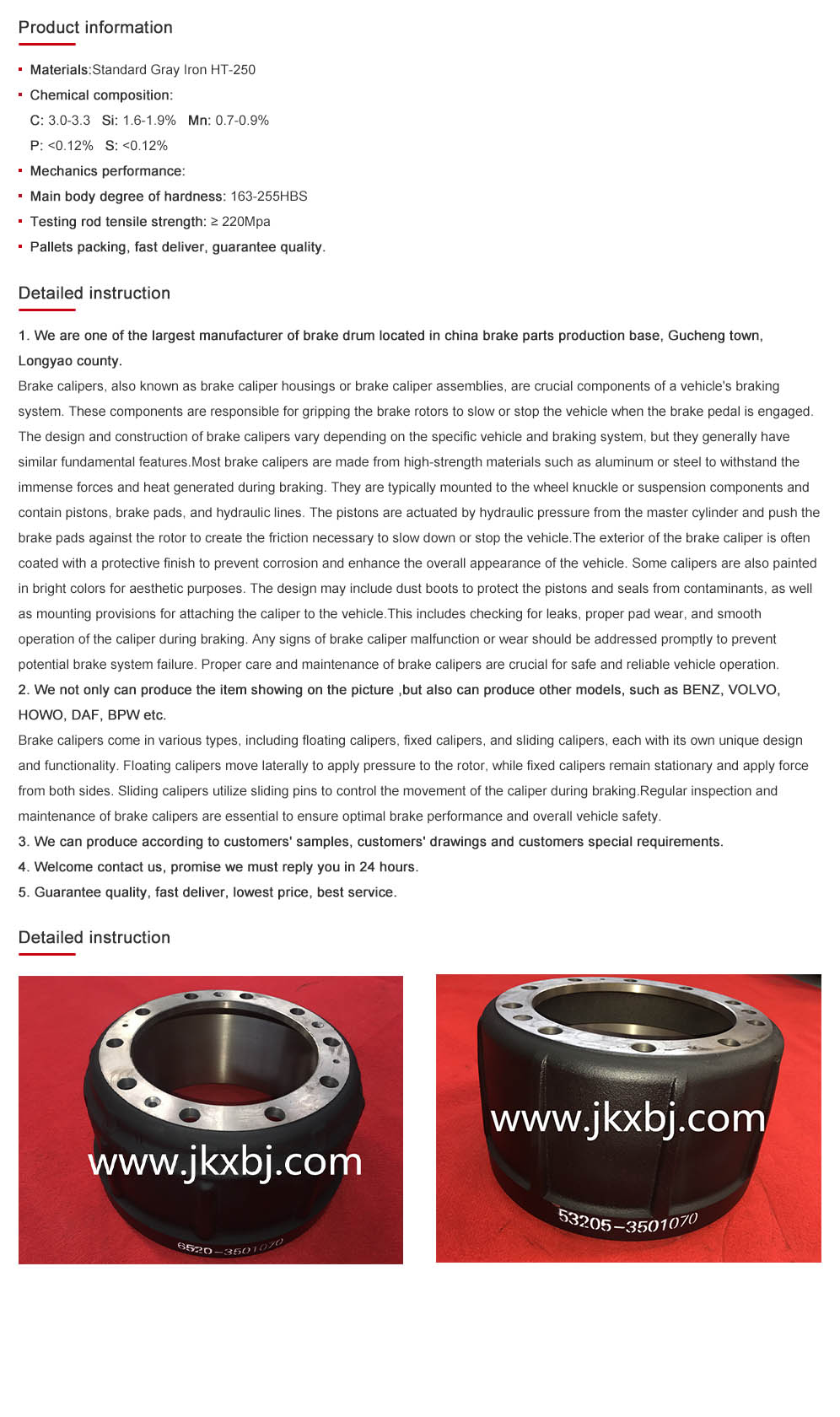8 月 . 13, 2024 11:02 Back to list
Rear Brake Drum Self-Adjusting Kit for Enhanced Performance and Reliable Stopping Power
Understanding the Brake Drum Self-Adjusting Kit for Rear Brakes
Braking systems are critical components of any vehicle, ensuring safety and stability during operation. Among the various systems that help in the braking process, the brake drum system remains an important option, particularly in older vehicles and some modern applications. An integral part of this system is the brake drum self-adjusting kit for rear brakes, which plays a vital role in maintaining optimal brake performance over time.
What is a Brake Drum?
Before diving into self-adjusting kits, it is important to understand what brake drums are. Brake drums are circular metal components that house the brake shoes. When the brake pedal is pressed, brake fluid is sent to the wheel cylinders, pushing the brake shoes against the inner surface of the drum, creating friction that slows down the vehicle. Given the significant heat and wear that occurs during braking, maintaining the drum and its components is crucial for safe driving.
The Need for Self-Adjustment
One of the challenges faced by traditional brake drum systems is that they can become misaligned or worn down over time. As the brake shoes wear, the gap between the shoes and the drum can increase, leading to diminished braking performance. Without proper adjustment, this could result in longer stopping distances and potentially hazardous driving conditions.
The purpose of a self-adjusting kit is to automatically maintain the correct distance between the brake shoes and the drum. This ensures that the brakes engage optimally without the need for frequent manual adjustments. As the brakes are used, the self-adjusting mechanism compensates for wear by automatically adjusting the position of the brake shoes.
Components of the Self-Adjusting Kit
A typical brake drum self-adjusting kit includes various components such as adjustment levers, cables, and springs
. These parts work together to provide a seamless adjustment processbrake drum self-adjusting kit-rear

1. Adjusting Levers These are crucial for converting the force applied to the brake shoes into a movement that will re-position them closer to the drum. 2. Cables These connect the adjusting lever to the actuator, allowing for smooth operation as the brake shoes wear away.
3. Springs Springs help in returning the system to its neutral position after braking, ensuring that the adjustment mechanism resets as needed.
When everything is functioning correctly, the self-adjusting kit keeps the brakes in an optimal state, enhancing safety and performance.
Benefits of Using a Self-Adjusting Kit
One of the most significant advantages of a self-adjusting brake drum kit is the reduction in maintenance required from the vehicle owner. Regular manual adjustments can be cumbersome, and the self-adjusting nature of the kit means that drivers can rely on their braking system to automatically compensate for wear and tear.
Additionally, with a well-functioning self-adjusting system, braking efficiency remains high, which can improve overall driving confidence and safety. Consistently accurate adjustments can also lead to longer service life for brake shoes and drums, which translates into reduced replacement costs over time.
Conclusion
In summary, the brake drum self-adjusting kit for rear brakes is an essential component for maintaining optimal braking performance in vehicles equipped with drum brakes. By automatically compensating for wear, it enhances safety, reduces the need for manual maintenance, and leads to longer-lasting braking components. For vehicle owners, investing in a self-adjusting kit can be a wise decision that promotes not only safety but also cost-effectiveness in the long run. As automotive technology continues to evolve, understanding such components becomes increasingly important to ensure safe and reliable vehicle operation.
-
Brake Drum for Kamaz Trucks Durable OEM Replacement & High Performance
NewsMay.30,2025
-
Brake Drum Man High-Quality Drum Brake & Shoe Solutions
NewsMay.30,2025
-
High-Performance Brake Drum for Kamaz Trucks Durable Drum Brake Components
NewsMay.29,2025
-
Brake Drum Man High-Quality Drum Brake Drums & Brake Shoes
NewsMay.29,2025
-
Brake Drum MAZ High-Performance & Durable Replacement Parts
NewsMay.29,2025
-
heavy truck brake drums
NewsMar.07,2025
